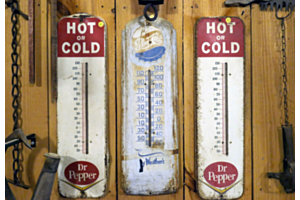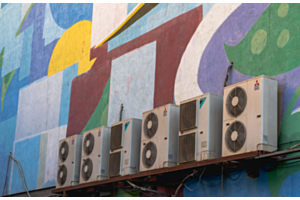Does a Higher SEER Cool Better?

On those hot days that are so frequent lately, more often than not, you’re pumping your air conditioner a lot. If you’ve been meaning to replace your AC for quite some time, there’s nothing like the summertime heat to remind you.
You’ve begun digging around and exploring your cooling options. As you do, you keep seeing one term over and over, SEER. What is SEER? Does having a higher SEER mean your cooling solution is more effective?
An Overview of SEER
Let’s answer your first question, what is SEER? SEER is an acronym that’s short for seasonal energy efficiency ratio. The SEER determines how efficient your air conditioner or cooling solution is under the Air Conditioning, Heating, and Refrigeration Institute. In Europe, SEER is referred to as ESEER, with the E in front standing for European.
To determine the SEER of your current air conditioner, you need to know its SEER rating. You can do this through a simple calculation.
Step 1: Find out your AC’s cooling output in BTU’s, this value can be found on a name plate on the outside unit. For this example, we will use 12,000 BTU’s.
Step 2: Find out your AC’s watts used per hour; this value can be found on the same name plate on the outside unit. For this example, we will use 1,200 watts.
Step 3: Find out the amount of BTU’s used during a standard season of cooling, aka the spring or summer. As an example, let us say you use 1440 hours, which is equivalent to about 180 days or 6 months. So now you multiply the amount of BTU’s found in step 1 times the 1440 hours to find out the total amount of BTU used in a year. So, 12,000 x 1440 = 17,280,000 BTU in a year.
Step 4: Now we will do the same with the watts found on step 2 times the 1440 hours per year to find out the total watts used in a year. So, 1200 x 1440 = 1,680,000 watts in a year.
Step 5: You divide the answer on step 3 by the answer found on step 4. 17,280,000 / 1,680,000 = 10.29 SEER
Does a Higher SEER Cool Better?
As you seek to ditch your old air conditioner and look into a more efficient unit, such as a ductless mini split, should you shop for one with a higher SEER? Does that mean it’s more efficient at cooling?
Yes, that’s exactly what it means. The average SEER rating for a ductless mini split is 19, but it’s possible for you to find some with ratings as high as 20.1 or 21.
Considering that for air conditioners, the average SEER rating is 13, you have a lot of room to get a more efficient cooling solution that makes your home or office feel very comfortable, even on those hottest summer days!
Ready to Upgrade Your Cooling Solution? Call PowerSave AC Today!
To get started shopping for your ductless mini split system, call the PowerSave AC team today at 1-877-297-6594. This summer, comfort is only a phone call away.
Sources:
https://en.wikipedia.org/wiki/Seasonal_energy_efficiency_ratio






